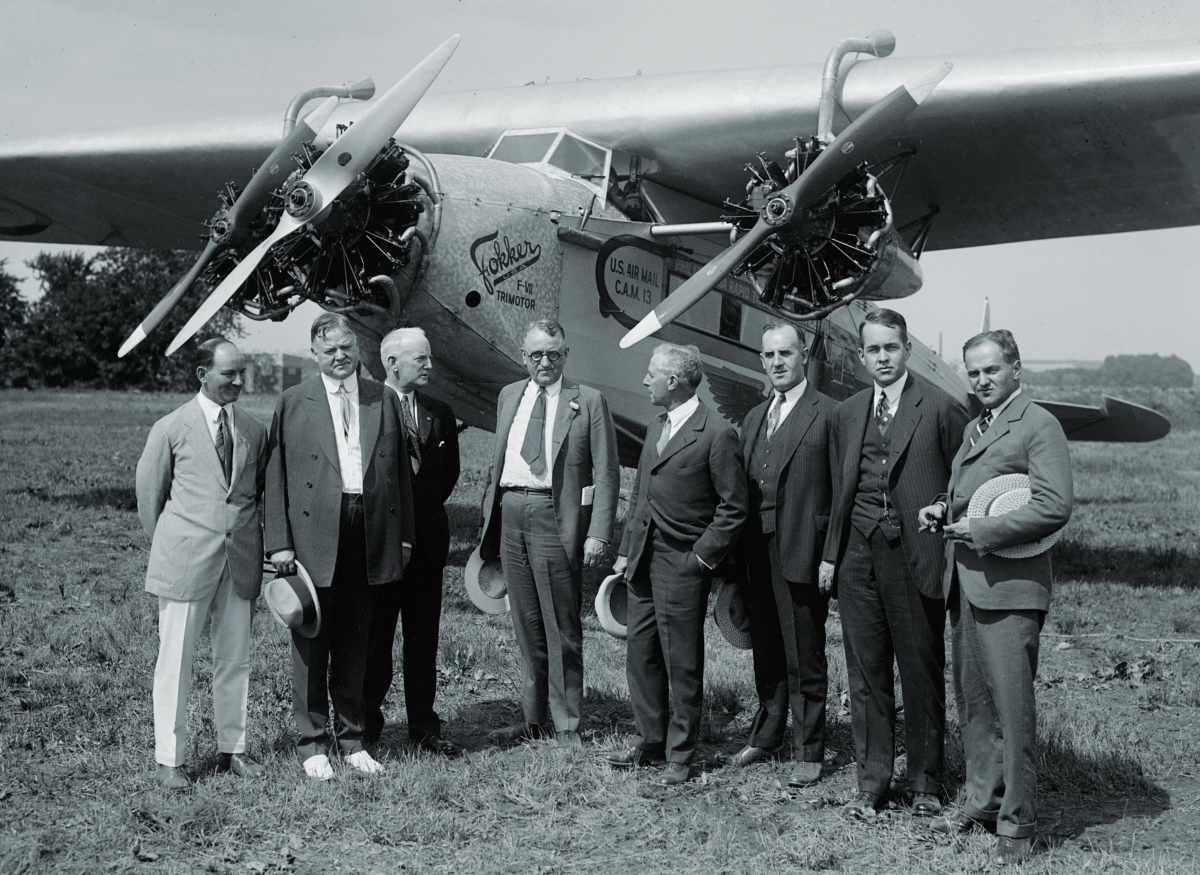Secretary of Commerce and future president Herbert Hoover (second from left) endures a photo opportunity with a Fokker F.VII, which was used to fly U.S. airmail. At Hoover’s right is Anton “Anthony” Fokker, the airplane’s designer. The date appears to be July 16, 1926, the day the first scheduled passenger service between Washington, D.C., and Philadelphia was launched. This grass field in Virginia across the Potomac River from Washington was even named Hoover Field after the commerce secretary. The field no longer exists, and the Pentagon now stands on the site.
The trimotor Fokker F.VII was a very successful airplane for its day. The original F.VII was a single-engine airplane, but Fokker had it converted to three engines to participate in a competition to design a transport aircraft. The result was the Fokker F.VIIA-3m. Admiral Richard Byrd used one of the airplanes in his attempt to fly over the North Pole in 1926, with Floyd Bennett piloting. Byrd named the airplane Josephine Ford after the daughter of Edsel Ford, who provided financing. (Ironically, the trimotor F.VII was the airplane that inspired Henry Ford to initiate the design of his own trimotor.) There is some controversy about whether or not Byrd did reach the pole that day.
Australian Charles Kingsford-Smith, Charles Ulm and two other crewmen used an F.VIIB-3m they named the Southern Cross to make the first aerial crossing of the Pacific, which they did in stages from May 31 to June 9, 1928. The nearly 7,200-mile flight originated in Oakland, California, flew to Hawaii, continued to Suva — the capital of the island of Fiji — and ended in Brisbane, Australia. Today, the Southern Cross is displayed at the Kingsford-Smith Memorial at Brisbane Airport.





